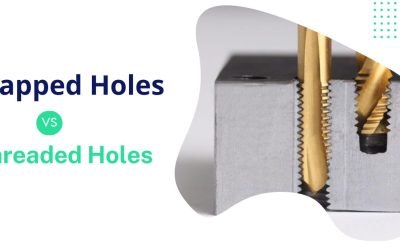Machining is the process of precisely cutting, bending or shaping various metal products. It produces accurate parts for all industries.
This article will cover key machining processes, the materials used, and the importance of precision. We will also discuss challenges in machining and highlight operations. That includes milling, lathe turning, and surface finishing.
What is machining?
Machining shapes metal by cutting away material. It involves tools for milling, turning, and drilling. These tools create parts with exact dimensions, even with complex designs. Machining ensures parts are precise and meet high standards.
It can create custom components by providing detailed control over each part. This is beneficial to preserve the integrity and functionality of critical systems.
Importance of Machining in Metal Part Manufacturing
The machining process allows manufacturers to produce parts with high accuracy. Industries that rely on intricate components benefit greatly from machining. That includes:
- Precision Shaping
- Complex Designs
- Reliability
- Customization
Precision Shaping
Machining allows for the exact shaping of metal parts. It ensures preciseness and adherence to specifications.
Complex Designs
The machining process enables the creation of intricate and detailed components. It meets complex design requirements.
Reliability
Machining is necessary for industries where precise components are critical. For instance, aerospace and medical.
Customization
Maching supports the production of custom parts tailored to specific needs. It enhances functionality and performance.
Benefits of Using Machined Metal Parts
- Consistency
- Cost-Effectiveness
- Reduced Waste
- Quick Turnaround
- Flexibility in Materials
- Post-Processing Options
Consistency
Machining ensures uniformity across large production runs. It leads to consistent quality in every part.
Cost-Effectiveness
Machining can be cost-effective in the long run and can produce precise parts efficiently. However, its initial setup might be high.
Reduced Waste
Advanced machining techniques minimize material waste. It can accurately cut away only the necessary material.
Quick Turnaround
Machining can quickly produce parts from various materials. That speeds up the manufacturing process.
Flexibility in Materials
This process is capable of working with a wide range of metals. That includes exotic and high-performance alloys.
Post-Processing Options
Allows for additional finishing processes, such as polishing or coating. That further enhances performance and appearance.
Types of Machining Processes
1. CNC Turning
Manufacturers can produce precise cylindrical parts through the CNC turning process. This process uses computer-controlled lathe techniques. That helps in shaping metal or other materials into precise, round components.
CNC turning provides several benefits. It ensures high accuracy for cylindrical parts. The process creates very smooth surfaces, cutting down on extra finishing work. Automation improves efficiency and consistency for uniform quality.
2. Drilling
Manufacturers create holes in a workpiece with a drill bit through the drilling technique. This drill bit rotates and cuts into the material. That forms a hole of the desired size and depth. Drilling is essential for various manufacturing and assembly tasks.
3. Milling
CNC milling uses computer-controlled machines. It cuts and shapes materials with high precision. This process excels at handling complex geometries and tight tolerances.
The CNC mill moves along multiple axes to remove material and create detailed parts. It can produce intricate shapes and designs that other methods might struggle with.
The process ensures exact dimensions and high-quality finishes. Its versatility allows it to work with various materials and produce simple, detailed features.
4. Swiss Machining
Swiss machining is a precision manufacturing method. That enables manufacturers to produce high-quality, intricate parts. This technique uses a sliding headstock and fixed tools. It helps create small, detailed components accurately. Swiss machining excels in high-volume production, making it ideal for industries. Its efficiency and precision reduce waste and improve overall productivity.
5. Grinding
An abrasive wheel or belt is used for grinding. It smooths and shapes parts. The abrasive surface removes small amounts of material. This process creates a smooth finish. It is essential for fine-tuning the dimensions and surface quality.
6. Lathe Machine Turning Operation
Lathe machines are essential tools in machining. They have evolved significantly from their early designs, becoming more precise and versatile. Throughout history, these devices have been vital in shaping metal components.
Types of Lathe-Turning Operations
Facing
This action cuts a flat surface on the end of a workpiece. It removes excess material and prepares the surface for further operations.
Taper Turning
This technique shapes the workpiece into a tapered or conical form. It gradually reduces the diameter along the length of the part.
Contour Turning
Contour turning creates curved or irregular shapes on the workpiece. It follows a predefined contour to produce complex profiles.
Threading
Threading makes helical cuts grooves along the surface of the workpiece. It creates threads for screws, bolts, and other threaded components.
Applications of Lathe-Turning Operations
Automotive
Lathe machines produce parts to use in engines and transmissions. For instance, shafts, gears, and custom components.
Aerospace
They make precise parts for aircraft. That includes landing gear components and turbine blades.
Custom Parts Manufacturing
Lathes create one-of-a-kind components for various applications. That includes prototypes and specialized machinery.
Materials Used in Machining
- Steel Alloys
- Aluminum Alloys
- Stainless Steel
- Titanium and Special Alloys
1. Steel Alloys
Steel alloys possess varied properties in machining. Different alloys of steel provide different levels of machinability, strength, and cost. It is suitable for specific projects.
1215 and 12L14 Steel
1215 and 12L14 steel are popular for high-volume machining. They offer excellent machinability. These low-carbon alloys are easy to cut and shape. It reduces tool wear and boosts production efficiency.
12L14 steel contains lead, which improves machinability even more. Both are cost-effective. It is commonly used to make small, precise parts. For instance, screws, bolts, and fittings. These alloys are chosen for tasks that need smooth finishes and accuracy.
4140 and 4130 Steel
4140 and 4130 steel are very strong and durable. They are made with chromium and molybdenum. These alloys are harder to machine but are very tough.
4140 steel is often used in aerospace and defense. It is great for making strong parts like gears and shafts.
4130 steel is lighter but still strong. It is good for making aircraft frames and structural parts. These steels are chosen when strength and reliability are very important.
2. Aluminum Alloys
Aluminum alloys provide lightweight, durable features. They enable perfect processing for machining metal parts and offer versatile features. It fulfills the needs of several industries.
7075 and 6061 Aluminum
7075 and 6061 aluminum are very popular. Many manufacturers use them in aerospace and car parts.
7075 aluminum is very strong, like steel. It works well where strength is key, like in aircraft wings and car parts. But it is slightly heavier and costs more than 6061.
6061 is a strong, light, and affordable alloy. It is more flexible and easier to machine than 7075. Many sectors use it in car parts, bike frames, and aircraft structures.
3. Stainless Steel
Stainless steel doesn’t wear out quickly. It stays strong over time. That is resistant to rust. It is used in food processing, medical tools, and building. Its strength makes it a good choice.
Grade 303
303 stainless steel is easy to machine. It cuts and shapes well. It is less resistant to corrosion compared to other types. Consumers use it for machine parts.
Grade 304
304 stainless steel is common and versatile. It is excellently resistant to corrosion. Several platforms use this metal for kitchen appliances, medical tools, and industrial equipment.
Grade 316
316 stainless steel resists corrosion the best. It handles harsh environments, like marine settings, without rusting. It is used in medical instruments, food processing equipment, and chemical processing.
4. Titanium and Special Alloys
Titanium Grades 5 and 23
Titanium offers strong and lightweight properties. Its grade 5 is used in aerospace and medical implants. Grade 23 is used in high-performance medical implants. Both grades resist corrosion well.
Special Alloys
- Hastelloy
- Inconel
- Nitronic 60
Hastelloy
Hastelloy is ideal for harsh and high-temperature conditions. It remains strong and resists rust.
Inconel
Inconel is designed for extreme temperatures and pressure. It is used in engines and high-stress parts.
Nitronic 60
It resists high temperatures and corrosion. This metal is used in marine and chemical processing equipment.
Precision in Machining
Tolerance and Quality Control
Tight tolerances are crucial for part reliability and performance. They ensure that parts fit and function correctly.
Coordinate measuring machine inspection and check dimensions accurately. Statistical process control monitors the process to maintain quality. In-process monitoring helps catch issues early.
Surface Finish and Post-Processing
Post-processing improves the surface finish of parts. Polishing makes surfaces smooth. Anodizing adds a protective layer.
Plating gives parts a decorative or protective coating. Heat treatment changes material properties for better performance.
A good surface finish affects wear resistance, looks, and how well a part works. Proper finishing ensures parts perform well and last longer.
Challenges in Metal Machining
Material Selection
Choosing the right material is very important. Hardness decides how hard or easy it is to machine. Machinability shows how well the material can be cut and shaped.
Cost also matters because some materials are more expensive. You need to balance hardness, machinability, and cost to pick the best material for the job.
Tool Wear and Maintenance
Tool wear is a common issue. Heat and friction from cutting can cause tools to wear out quickly. Material hardness also affects tool life.
To manage wear, use preventive maintenance to check and service tools regularly. Tool coatings can reduce friction and wear. Proper lubrication helps keep tools cool and reduces wear.
Handling Complex Geometries
Machining complex parts can be challenging. Intricate designs, tight corners, and thin walls are hard to handle. Solutions include using advanced CAD/CAM software to plan and design parts.
5-axis machining allows for precise cutting from multiple angles. Custom tooling can be made for specific shapes and features. These techniques help overcome the difficulties of machining complex geometries.
Conclusion:
We looked at different machining processes for metal parts and material options. Precision and choosing the right material are very important. Picking the right materials and keeping tight tolerances help make reliable and high-quality parts.
Machining is key in modern manufacturing. It affects many industries, like aerospace and medical devices. Its accuracy and flexibility drive progress and ensure parts work well in different uses.






0 Comments